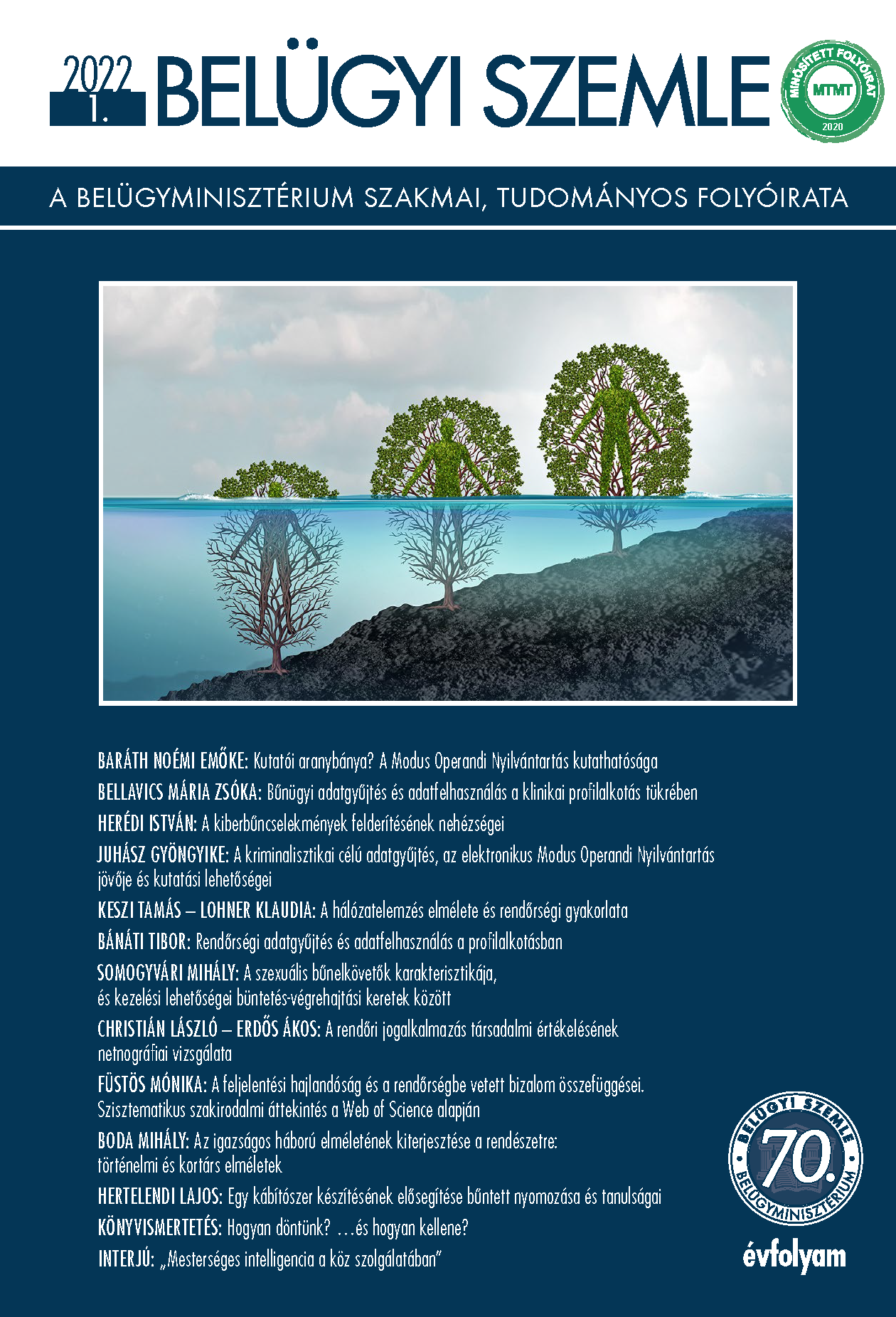Keywords
game theory
graph theory
network analysis
criminal analysis
graph theory
network analysis
criminal analysis
How to Cite
Theory and policing practice of network analysis. (2022). Academic Journal of Internal Affairs, 70(1), 69-86. https://doi.org/10.38146/BSZ.2022.1.5
Abstract
The aim of our study is to highlight the usefulness of network analysis methods in the field of law enforcement, and that the future of this field depends on collaboration and productive cooperation of theory and practice. After a brief historical overview, we introduce the most important concepts related to network analysis and graph theory, and then present a possible resolution strategy for a mafia network. Finally, we provide an overview of the directions of network analysis that can be used in profiling.
Downloads
Download data is not yet available.
Similar Articles
- Béla Gyömbér, Intellectual property related crimes in 2013 , Academic Journal of Internal Affairs: Vol. 62 No. 11 (2014)
- Tamás Drusza, András Hunor Lehel, Andrea Mészáros, Tamás Pressburger, International Law Enforcement Observer XIV. , Academic Journal of Internal Affairs: Vol. 72 No. 7 (2024)
- Valér Dános, Szandra Fazekas-Pátyodi, „The crime-free village” , Academic Journal of Internal Affairs: Vol. 72 No. 7 (2024)
- Dávid Petrétei, The Future of the Criminalistics, the Criminalistics of the Future , Academic Journal of Internal Affairs: Vol. 62 No. 10 (2014)
- János Sallai, The role of criminal geography in policing , Academic Journal of Internal Affairs: Vol. 62 No. 9 (2014)
- Csaba Zsigmond, Problems and questions concerning the self-defence provision , Academic Journal of Internal Affairs: Vol. 62 No. 7-8 (2014)
- Ferenc Szép, Prevention and local challenges , Academic Journal of Internal Affairs: Vol. 62 No. 4 (2014)
- Csaba Tóth, Roma offenders or „Gypsycriminals”? , Academic Journal of Internal Affairs: Vol. 62 No. 4 (2014)
- Gyula Bogdány, Inverstigating homocide cases , Academic Journal of Internal Affairs: Vol. 62 No. 4 (2014)
- Imre Elek, László Hanka, Fragmented footprints as evidence , Academic Journal of Internal Affairs: Vol. 62 No. 3 (2014)
You may also start an advanced similarity search for this article.
Most read articles by the same author(s)
- Klaudia Lohner, Special Investigative Support and Behavioural Analysis , Academic Journal of Internal Affairs: Vol. 72 No. 5 (2024)
- Klaudia Lohner, Criminal profiling – trough researches to crime scene investigation , Academic Journal of Internal Affairs: Vol. 69 No. 12 (2021)
- Klaudia Lohner, Zsombor Hermann, József Haller, Traces of sexual motivation at the crime scene: from criminal psychology to forensics , Academic Journal of Internal Affairs: Vol. 69 No. 10 (2021)
- Éva Rompos, Noémi Emőke Baráth, Zsóka Mária Bellavics, Klaudia Lohner, József Haller, The law enforcement neurobiology of the „bika” (bull) drug , Academic Journal of Internal Affairs: Vol. 69 No. 4 (2021)
- Klaudia Lohner, István Csomós, Risk analysis of potential terrorist offenders , Academic Journal of Internal Affairs: Vol. 70 No. 9 (2022)
- Klaudia Lohner, Arab nevek a rendvédelmi adatbázisokban – rendszerezés, értelmezés, átírás , Academic Journal of Internal Affairs: Vol. 67 No. 7-8 (2019)

